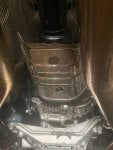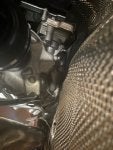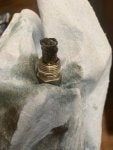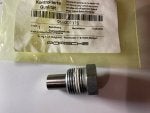The reason for the 2-step drain and fill procedure is that the case contains two oil reservoir areas, the upper one is behind the side fill plug, and that's why the procedure is to use a "J" shaped tube to reach down to the bottom of the upper reservoir to suck the fluid out of that. When the bottom drain plug is removed, then the bottom reservoir fluid emptied.
The two-step fill procedure fills the upper reservoir through the side plug, and then the lower reservoir is filled through the top air vent.
From what I see (from pics of the internals of the TC), the fluid from the lower reservoir is "pumped" by a slinging action of the rotating clutch assembly into the upper reservoir, and the oil in the upper reservoir flows thru a tube and drip lubricates the center bearing section of the clutch assembly, before it eventually returns back down into the bottom reservoir.
By separately filling both reservoirs (rather than just filling all the fluid thru the top vent), it ensures that fluid is available, right away, in the upper reservoir, so that the clutch center bearing is always lubricated, rather than some delay of waiting for the sling "pump" to fill the upper reservoir, during the first drive after the fluid has been changed.
Thank you for this detailed description!
I wanted to change mine early to remove break-in / wear materials, about 12k miles.
My 23S has a few differences from most of the photos and videos of the transfer case: It has a magnetic drain bolt (with a white sealant) instead of a hex plug, and a metal shield between the transfer case and exhaust pipes. It's bolted to the transfer case with two triple square bolts (M13 I think).
I can drain the transfer case through the bottom drain bolt with the shield/cover in place, but it blocks the side fill plug. I decided to leave it on and partially drain and fill a few times while starting the car in between each drain/fill to see if that would mix the old and new fluid.
Initial drain from the bottom was ~325mL. Fluid was nearly black and the bolt had some black metal paste on it. I added 325mL through the top vent (used Red Line MT-LV) using the same syringe from Amazon - thank you again!
I drained a total of 3 times and by that time the fluid coming out looked close enough to the new fluid. My simple math calcs show, assuming 500mL total inside and 325mL drains and 100% mixing of old and new fluid, 35% of old fluid remains after initial drain, 12% after the 2nd, and 4% after the 3rd. One more drain/fill would have been <2% old fluid.
Runs smooth, can't tell the difference in before/after.
P/N for the magnetic drain bolt: 95B301115










